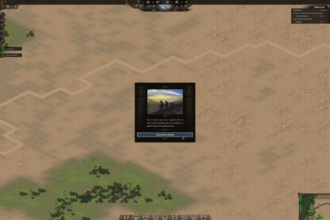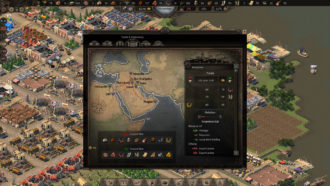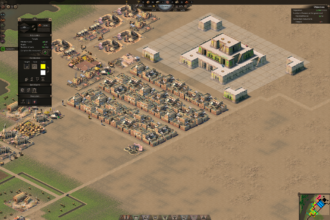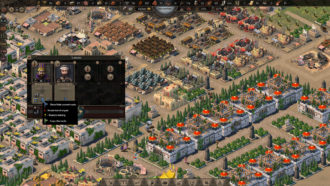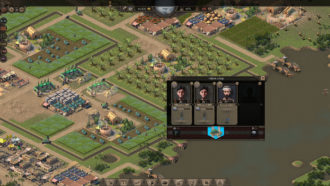We just don’t see games like Nebuchadnezzar anymore. City building sims still exist, yes, as do historical settings in games – but it has been a truly long time since we’ve seen a city-building game set in ancient times. As time went on, so too did the settings of these games – we moved onto medieval times, the renaissance, the industrial era, and beyond – but not often has the city simulation genre returned to ancient times. Modern historical simulators like Civilization 6 and Crusader Kings III tend to focus on the bigger picture of running an entire empire rather than sweating the small stuff.
But I love to sweat the small stuff, as do everyone else who are fans of the niche gaming genre that is historical city builders.
Nebuchadnezzar takes inspiration from historical city builders before it, like Caesar III and Pharaoh, whose influence becomes clear upon first glance of the game. There are many similarities, like the types of resources you need to produce and import to keep your population happy, the functions of the different buildings, and the way that houses upgrade when they receive certain types of goods. Fans of those old games will feel right at home, while newcomers might feel a little overwhelmed at all the mechanics. It’s definitely a genre that requires some trial and error at times, as well as some time spent trawling through the in-game encyclopedia for a refresher.
The campaign mode allows you to experience the history of Mesopotamia, all the way from its first settlers to the fall of Baylon. Each level description gives you not only an overview of the mission’s requirements but of the city’s actual history as well, meaning you can learn a little about the fascinating history of Mesopotamia while you play.

Being so used to the systems used by city builders of the past, it was very hard to change my mindset to suit Nebuchadnezzar’s mechanics. The tutorial is mostly sufficient, with an encyclopedia you can access at any time for more information, but somehow I still found myself falling back into my old strategies for Caesar III and Pharaoh. But Nebuchadnezzar works differently, and in ways that totally changes the way you think about your city.
Firstly, unlike most city builders, the biggest commodity you have in Nebuchadnezzar is space. You have to really think about where you put your housing blocks and interatrial areas, or else you’ll start to run out of space fast. On the flip side, you have a lot of control over the route your walkers and transport carriers take, allowing you to more effectively plan your budding city.
Monument building is also improved, with the ability to either let the game auto build it with your resources, or take control of the monument’s design yourself, right down to the colour and decorations. There is great fun to be had with this, and helps a bit to prevent each scenario from feeling like you’re just building the same city all over again.
Gardens and statues can be placed around your city to lower pollution and help make the city look a bit easier on the eyes. While the designs of the buildings themselves are quite good, the graphics overall has a somewhat muddy undertone that doesn’t compliment the buildings very well. Your city won’t really pop until you upgrade your city to the highest stages, and until then your city will mostly be a wash of brown.
“Learn a little about the fascinating history of Mesopotamia while you play.””
One classic aspect of city builders is missing in Nebuchadnezzar: the citizens themselves. Oh, they’re present all right – scurrying to and fro, performing the task assigned to them. But they lack personalities, not having a single voice line or bit of dialogue that would make them seem more than a bit of programming.
There’s also no ambient noise or sound effects, which makes cities feel a little lifeless after a while, not even building temples stopped each city from feeling the same.
All this being said, Nebuchadnezzar is lacking a bit of depth, which makes the levels wear thin after a while. There is no military in the game, which at first gave me relief; as it had always been my least favourite part of Pharaoh. But soon I began to realise that far more than there just being no military threat, there was also no political threat from scorned cities or kings. There is not even a chance of your buildings catching fire or collapsing, nor any chance that some deity will put a curse on you. If you run out of money, there is no consequence; you can simply delete some of your gardens and get your money back.
Without any sort of threat to the city, it became a bit to easy to become uninvested in each mission that went by. It’s unfortunate, but it likely means that for all that Nebuchadnezzar does right, it probably won’t usurp Pharaoh its spot as my go-to city-builder.
6
Decent
Positive:
- A nostalgic return to classic city builders
- Encourages careful planning of your city
- A fun way to learn about ancient Mesopotamia
Negative:
- No social or structural upkeep to worry about, making gameplay lack depth
- City inhabitants don't have any personality
I can safely say that any fan of Caesar III or Pharaoh will want to pick this one up, despite its problems. It’s fun enough to play around with, especially with building the temples, but it just doesn’t do any one aspect of city builders better than games that already exist. I’m encouraged by the mod manager in the main menu, which indicated that the devs will be embracing community mods with open arms, and hope to see some of the gameplay deepen in the future.
